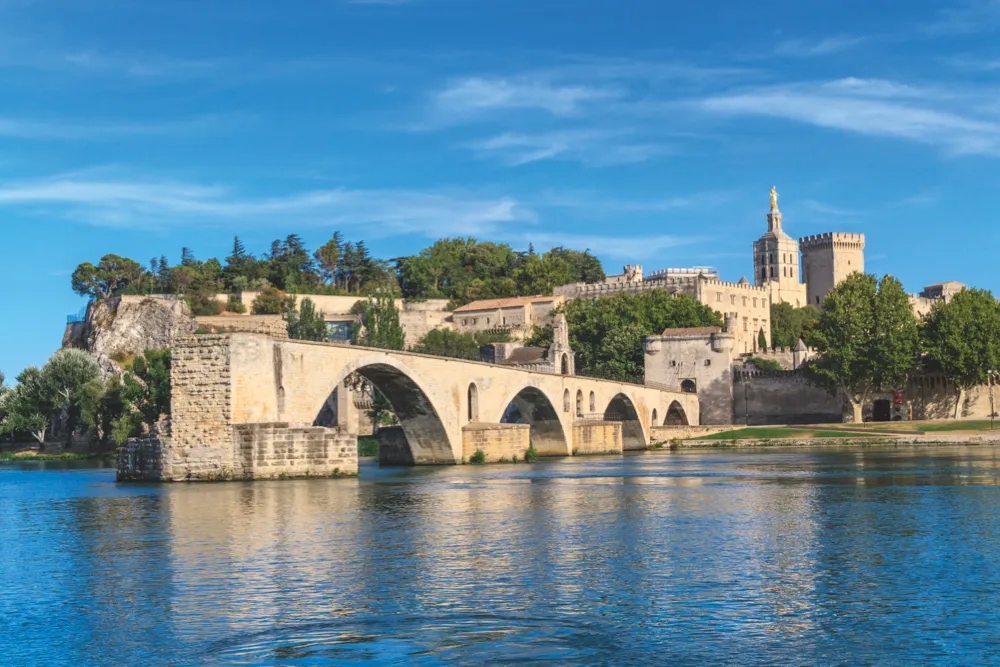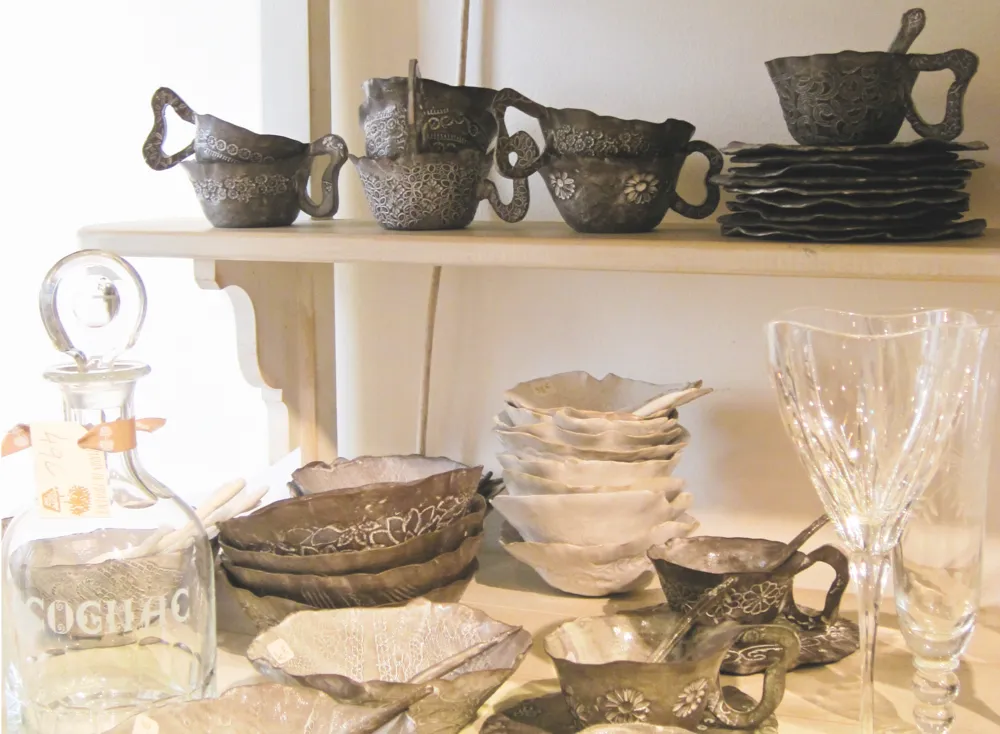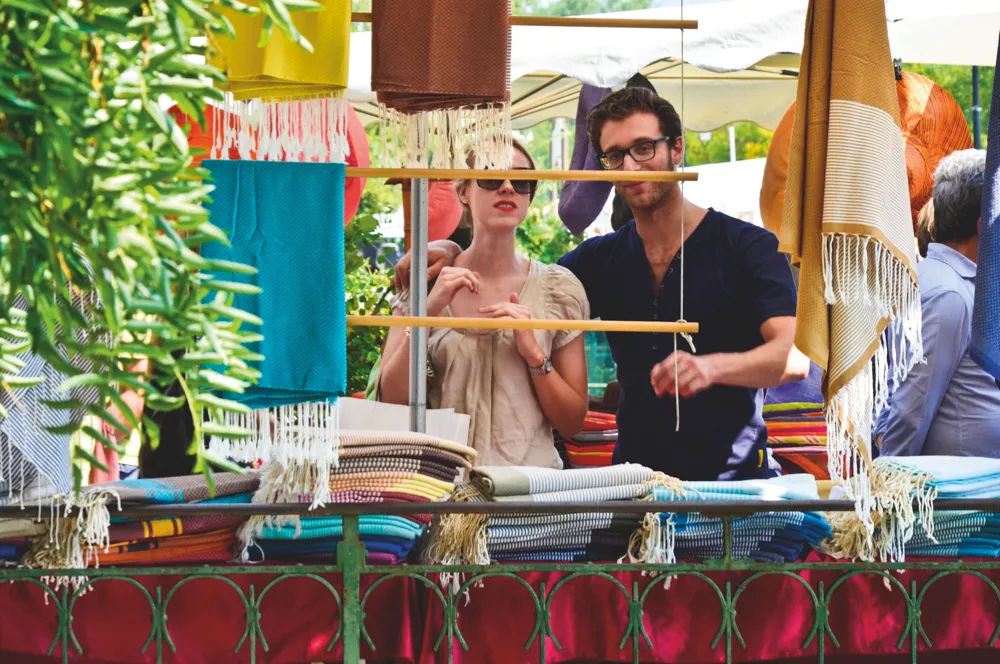This Easter marks the 100th time that art and antiques dealers have set up for the celebrated biannual fair in Isle sur la Sorgue, Provence.
Founded antiques dealer Joseph Légier in 1966, it is Europe's oldest fair and has grown from welcoming 14 exhibitors at the start to over 200 today. It is now visited by over 100,000 antiques hunters at each of its installments at Easter and in August – among them, the likes of John Malkovich, Brad Pitt and Angelina Jolie, and the Crown Prince of Thailand.
To mark the 50th year and 100th event, an anniversary show that celebrates the evolution of interior decor from the 1960s to the present day will be held. There will also be a bargain hunter's evening, which will guide you through the array of Provençal rugs, old earthenware jugs, rustic tableware and furniture.
If you’re tempted by an antiques hunting trip to Isle sur la Sorgue, the best base for it is the nearby city of Avignon. A 30-minute drive from the fairground of Isle sur la Sorgue, Avignon is one of the finest examples of medieval architecture in Europe. But beyond the grandeur of its walls, you’ll also find a plethora of brilliant bargains and antiques shops to rummage among.
Once you've spent a day or two at Isle sur la Sorgue, use our guide to Avignon's best hotels, eateries and antiques shop to round off your trip.

Avignon’s best boutiques and shops
1
Atelier Stéphanie Lebreton, 4 rue escaliers Sainte Anne
La Manutention is a little enclave tucked against the walls of the papal palace with an indie cinema called Utopia, a couple of boho cafes, and a number of craft workshops. One proprietor is Stéphanie Lebreton, who sandblasts, etches and foxes glass. You can buy his decorated Duralex glasses ready to go with simple patterns for €30 (£25) for six or order your own with your choice of words.
2
Galerie 567, 17 rue Petite Fusterie
In this cobbled, 17th-century courtyard, Gérald Baume has set up a mélange of furniture, sculpture and ceramics. Furniture from the 50s, 60s and 70s sits alongside contemporary Calder-esque mobiles, a Fornasetti wardrobe and resin animal ornaments from Brazil. Displayed together it’s a space worth visiting as they give the impression of a gallery rather than a shop.
3
Hervé Baume, 19 ter rue Petite Fusterie
Of this 180 sq m showroom, 80 sq m is devoted to wrought-iron furniture suitable for grand gardens and poolsides. The remaining space is a magpie collection of old and new, filled with whatever takes the fancy of owner Hervé Baume, collector, decorator, antiquaire and uncle to Gérald Baume at Galerie 56.
4
Au Jardin de Provence, 2 rue Petite Fusterie (Contact +33 4 90 86 29 38)
A delightful shop in a 17th-century hôtel particulier, its collection of Provençal-style furniture and homewares reflects the taste of its owner, dame d’un certain age Jeannine Ordinana-Vezolles. Prices range from €45 (£37) for a cup and saucer by local ceramicist Valerie Cassado to €1,450 (£1,200) for a pair of vintage roundabout horses.

5
Mouret, 20 rue des Marchands
This exquisite little hat shop, classified by the French government as a historic monument, has remained more or less unchanged since it opened its doors in 1860. The exuberantly carved woodwork and mouldings in the original Louis XVI-style interior are the antithesis of pared-down and minimal. From authentic berets made in the Basque country to panama hats from Ecuador are particularly popular, here you’ll find hats piles around the room.
6
CqFD, 16 Place de la Principale
This relatively new shop (its sign proudly says ‘Since 2013’) trawls France for emerging designers of homewares, jewellery and clothes, and mixes their wares with vintage furniture. A fresh affordable collection, the only criteria is that the designers must be French and the products must be made sustainably in France.
7
Unikorner, 26 rue des Lices
Bénédicte Longechal and her dog Étoile (‘Star’) are a familiar team at regional flea markets, where they unearth beautiful mid-century furniture and accessories. A set of six 1960s Formica chairs was a bargain at €150 (£123) but one of her 1970s ice buckets, €12 (£10), or ‘Ricard Anisette’ jugs, €30 (£25), would be more portable.
8
Vox Populi, 17 rue Thiers
The ground floor of this 18th-century building is an appointment-only showroom for decorator and créatrice of whimsical wire lamp sculptures Pascale Palun but it looks more like a decayed-chic stage-set filled with unusual displays. Pascale’s lamps, shaped like chateaux or hot-air balloons, cost up to €1,000 (£820) but there’s also a range of affordable circus-poster scarves and old portrait cushions, too.
Courtyard eateries
Often with live music, outdoor cafes and restaurant terraces hum until late; al fresco dining in pretty courtyards is one of Avignon’s delights. The courtyard of one 14th-century cloister, for example, is now a restaurant/bar called 83 Vernet (83 rue Joseph-Vernet). It’s big and buzzing but there’s a more intimate, olive tree-lined courtyard at Le Bain Marie (5 rue Petramale) and equally pretty ones at L’Essential (2 rue Petite Fusterie) and Les 5 Sens (Place Plaisance, 18 rue Joseph-Vernet). Each does a changing contemporary take on French classics, such as magret de canard and boeuf tartare.
Walnut is plentiful in this region and, in Avignon’s regular brocantes and flea markets, you’re as likely to find a nice walnut chest as you are some bizarre taxidermy or pretty 1970s glass jug engraved with olives. There’s a small brocante at Place Pie (by Les Halles, the indoor food market) every Tuesday and Thursday from 7am to 4pm, a Sunday morning flea market at Place des Carmes, and an upmarket brocante with up to 50 stalls five minutes across the Rhône in Villeneuve-lèz-Avignon (bus 5 from Porte l’Oulle) on Saturday morning.

Mansions and museums
Avignon’s position on the Rhône and its papal connections attracted traders and aristocrats to build impressive private mansions, several of which now house museums. At the Musée Vouland (17 rue Victor Hugo), former home of a 19th-century industrialist, the collection includes Vouland’s furniture and porcelain, plus paintings by regional artists. Musée Angladon (5 rue Laboureur) was once home of belle époque fashion designer and collector Jacques Doucet. His purchases include work by Van Gogh, Dégas, Picasso, Cézanne and Sisley. The Musée Calvet (65 rue Joseph-Vernet) was the home of an 18th-century town councillor and is now a beaux-arts and archaeology museum.
Pretty as it is from inside the ramparts, the best views of Avignon are from outside. Locals use the green space of Barthelasse Island across the river like a giant city park. Join them on the free river shuttle (navette fluviale) that leaves from the right of the Pont d’Avignon and walk the towpath, or pick up one of Avignon’s Velopop rent-a-bikes and cycle along lanes beside farmers’ fields.
How to get there
You can travel to Avignon from St Pancras International on the Eurostar, and visit the tourist office, Avignon Tourism, at Cours Jean Juarès for information about what’s on.
If you’re heading straight from Isle sur la Sorgue, we recommend travelling the 30-minute car journey, or take the train direct from Avignon center for the same travel time.
Where to stay
When you opt for a B&B, the owner’s local knowledge is a priceless extra.
- At Côté Square (8 rue du Crucifix) – which has doubles (below) from €120 (£94) – Veronique’s homemade yoghurt for breakfast is great too.
- La Banasterie (11 rue de la Banasterie) has rooms from €125 (£98).
- Maison Boussingault (39 rue Boussingault), whose owner Ann works at Vox Populi, has rooms from €110 (£86).